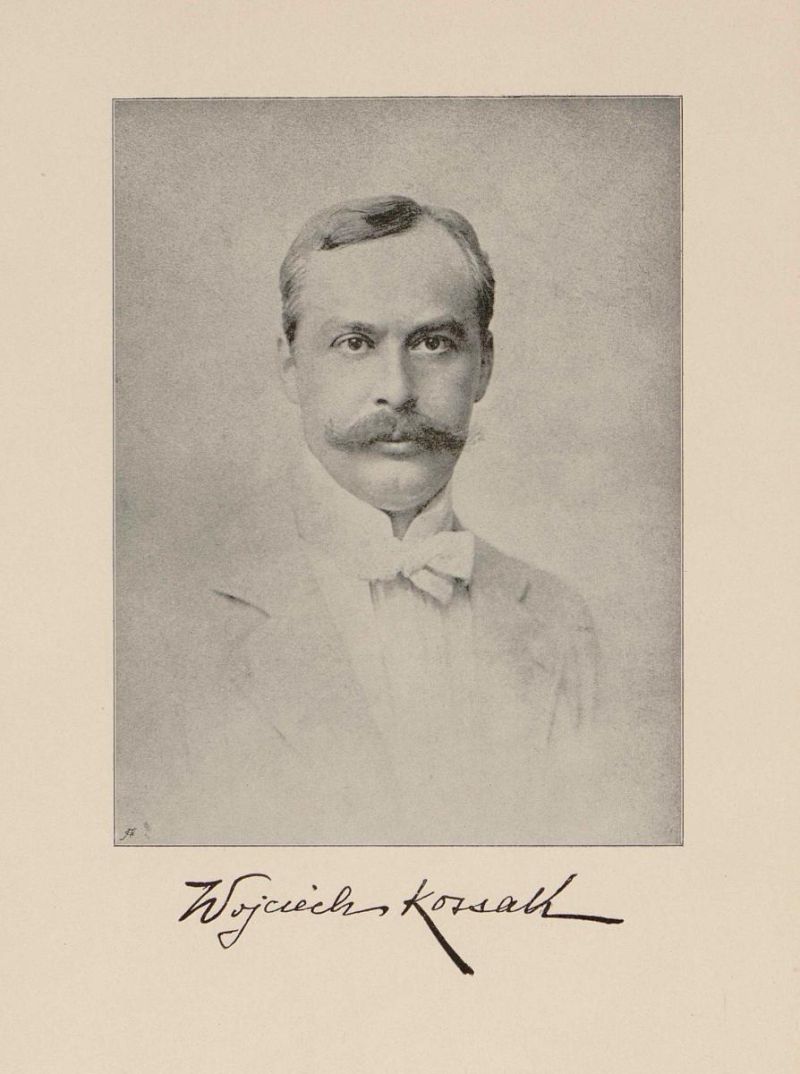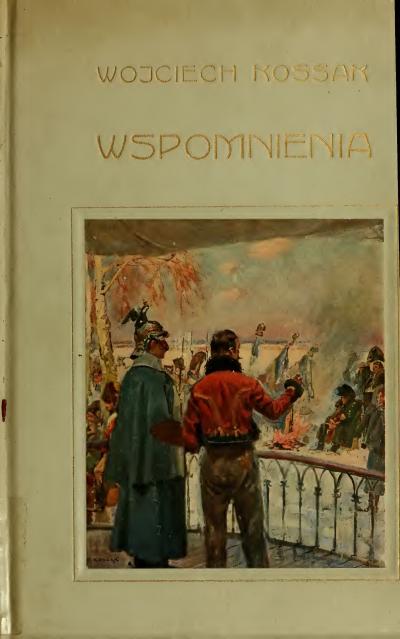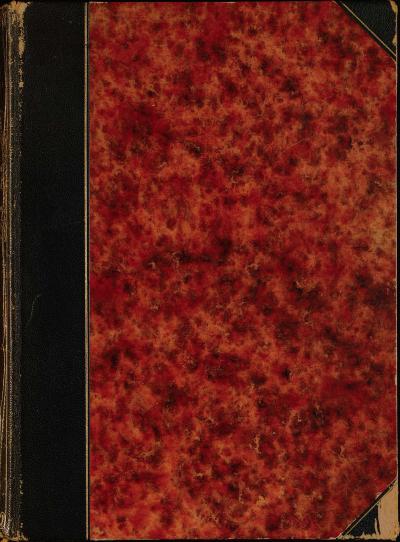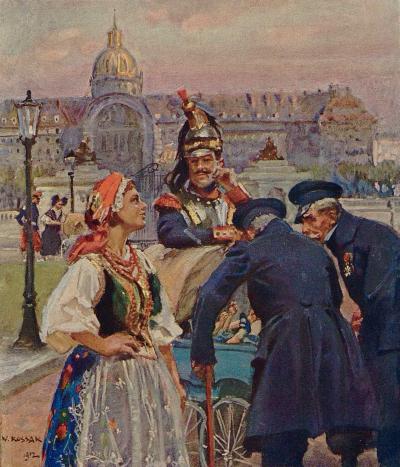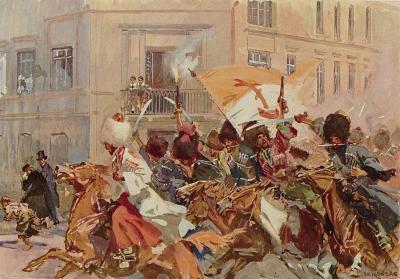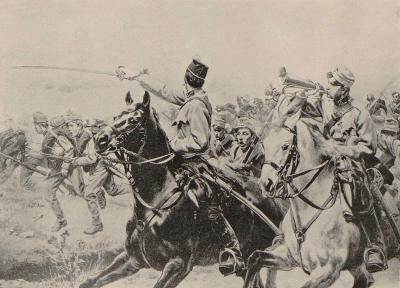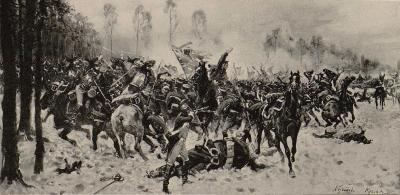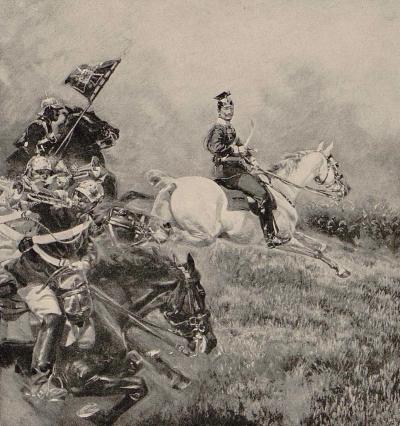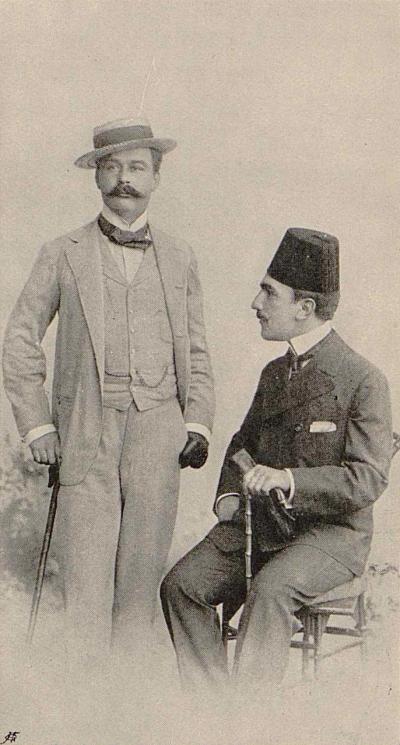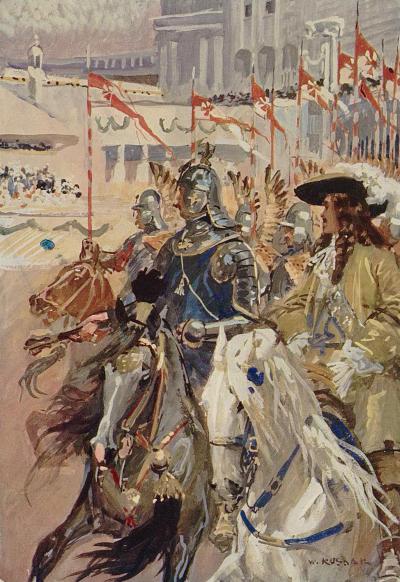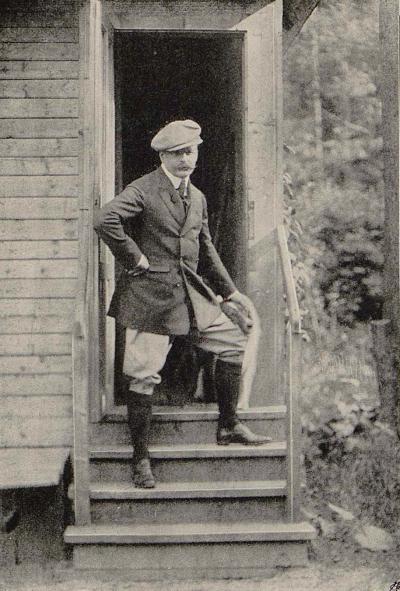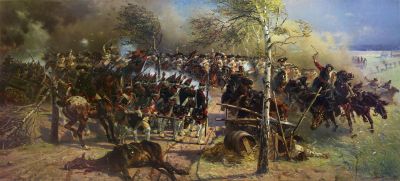Wojciech Kossak: Memoirs, 1913

The Krakow chapter takes the reader to the time of Wojciech's first studies at the Krakow School of Drawing and Painting/Szkoła Rysunku i Malarstwa, (from 1873 the School of Fine Arts/Szkola Sztuk Pięknych), which he attended after leaving grammar school at the age of fourteen with his father's permission. Under the guidance of the history painter and art historian Władysław Łuszczkiewicz (1828-1900), a man "without any artistic talent", as Kossak writes (p. 38), the young art student learned to draw and paint from male and female nude models and from nature. The atmosphere at the school was relaxed and cheerful. The young Polish "Bohème" students, whose parents did not live in Krakow, lived in dire poverty.
One year later Wojciech's father brought him to Munich for further training and placed him "under the guardianship of a whole Plejade" of older Polish artists like Maksymilian Gierymski, Józef Brandt, Stanisław Witkiewicz, Józef Chełmoński and Władysław Czachórski, as well as "lesser known, less famous" artists like Władysław Malecki, Ludwik Kurella, Antoni Kozakiewicz and Franciszek Streititt, who were "the most pleasant colleagues and comrades, free from any professional envy". In his Munich chapter Kossak also mentions younger Polish painters "who joined them after work": Alfred (Wierusz-)Kowalski, Henryk Piątkowski, Franciszek Kostrzewski, Stanisław Czachórski, Jan Rosen, Tadeusz Ajdukiewicz, Włodzimiersz Łoś, Wojciech Piechowski, Roman Szwoynicki, Antoni Piotrowski and Michał Pociecha. A "wonderful harmony" prevailed among them, "the older ones were sincerely kind towards the boys and the boys could feel it" (p. 41).[6]
Twice a day, according to Kossak, the artists met without exception for a coffee in Café Carlsthor, and in the evening for a game of billiards in Café Tambosi[7] The painter Josef/Józef Brandt was the main figure in the circle. At that time Munich art dealers were pushing motifs of the "Polish landscape" and these were sold in droves: "Anyone who could paint a flat horizon with a grey sky and a few wolves on it was sure to make a bargain, no matter what the work was like. "Enormous quantities" of such landscapes were exported to America. Many painters "secured material independence for the rest of their lives during these few golden years" (p. 42). He himself had scarcely left the Munich Academy of Arts where he had studied under Alexander Strähuber (1814-1882),[8] kand alternately drawn scenes from ancient mythology and, in evening classes, female and male nudes (p. 43). He experienced the working anniversary of the academy director Wilhelm von Kaulbach (1805-1874), which was celebrated by the student fraternities, as well as attending numerous opera performances and philharmonic concerts. Ultimately he left Munich "without the slightest regret, but enriched with technical knowledge" (p. 44).
A little more than the ten pages describing his artistic studies in Krakow and Munich are taken up by the section of Kossak's memoirs entitled "military service" in 1876/77. The reason for this is that they played a decisive role in the development of his "singularity as a painter". His portrayal of military service "with the Ulans, a genuine Polish Krakow regiment" is a homage to the "Polish cavalry of men and horses" (p. 47) and to a special type of Polish soldier: weather-beaten, full of energy and determination, with an attentive eye, straight back and the typical "Masurian moustache... the horse makes him lithe and agile" (p. 49). A detailed anecdote describes Kossak and his twin brother during drill and a demonstration of galloping, attacking and retreating - again illustrated with matching watercolours.
[6] Extensive biographies of the majority of the Polish artists working and studying in Munich can be found on this portal in the Encyclopaedia Polonica, listed under https://www.porta-polonica.de/de/lexikon/muenchner-schule-1828-1914. Numerous other contributions and online exhibitions on this portal deal with the Polish artists of the Munich School mentioned by Kossak: Polish Artists in Munich 1828-1914, https://www.porta-polonica.de/en/atlas-of-remembrance-places/polish-artists-munich-1828-1914; Aleksander Gierymski, https://www.porta-polonica.de/en/atlas-of-remembrance-places/aleksander-gierymski; Maksymilian Gierymski, https://www.porta-polonica.de/en/atlas-of-remembrance-places/maksymilian-gierymski; Alfred Wierusz-Kowalski, https://www.porta-polonica.de/en/atlas-of-remembrance-places/alfred-wierusz-kowalski; Józef Brandt, https://www.porta-polonica.de/en/atlas-of-remembrance-places/jozef-brandt; Workshops of Polish painters in Munich ca 1890, https://www.porta-polonica.de/de/atlas-der-erinnerungsorte/ateliers-polnischer-maler-muenchen-um-1890
[7] Kossak writes “Tambozzi”, p. 42
[8] Kossak writes “Striehuber”, p. 43; He also studied with Sándor (Alexander von) Wagner (1838-1919) and Wilhelm Lindenschmit (1829-95) until 1876. The Polish edition was published in one copy

















































































